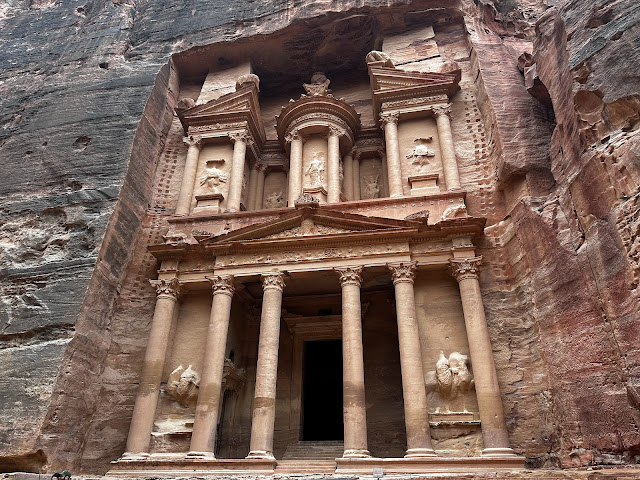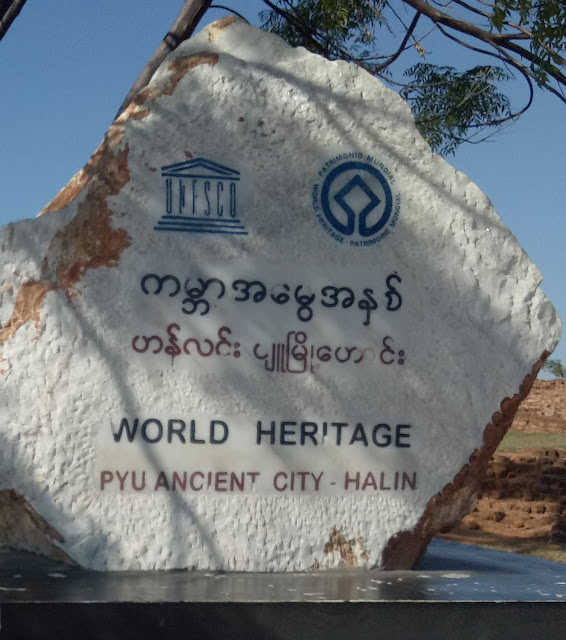Kamphaeng Phet Historical Park is located in Kamphaeng Phet province of Thailand. It is about 360km north of
Bangkok, about 80km south of Sukhothai and about 350km south of Chiang Mai. Along with Sukhothai Historical Park and Si Satchanalai historical park, it is a part of the UNESCO World Heritage Site named “Historic Town of Sukhothai and Associated Historic Towns” (designated in 1991 CE).
The most convenient way to
reach the historical park is flying to Sukhothai via a domestic flight, as long as you
already have private transportation organized from the airport. Otherwise, the more
time consuming and less expensive public transportation or private vehicle options
could be explored from major cities such as Bangkok or Chiang Mai, depending on
the how much time is available.
Wat Phra Kaeo also known as the Temple of the Emerald Buddha is a large royal temple located within the central zone of Kamphaeng Phet Historical Park.
 |
| Wat Phra Kaeo at the Kamphaeng Phet Historical Park |
Estimated to have been built
during the Sukhothai Kingdom (around 15th Century CE), the
temple only contains a Buddhavasa area (where all structures are dedicated to
the veneration of Buddha). The non-existence of a Sanghavasa area indicates
that there were no resident monks within the temple. The temple was located
next to Sa Mon which was the royal palace of which no standing structure
remains today.
The main structure of the temple
consists of several chedis (Buddhist stupas), viharas and Buddha
images that have eroded over time. The temple enclosure is a wall constructed
using large blocks of laterite.
The elephant encircled chedi in
the west corner of the complex and the gallery which enclosed it has collapsed
and only its base is visible today. Standing around the base of the chedi were
thirty-two carved Sukhothai style elephant statues of which only a few remain today. The design where the statues are sticking out of the base of
the structure gives the appearance that the elephants are carrying the
chedi on their backs.
 |
The elephant statues sticking out of the base of the structure gives the impression that the elephants are carrying the chedi on their backs
To the east of the chedi, there
was a large structure of a standing Buddha of which only the feet remain.  | | Feet of the large standing Buddha structure which once stood at the temple |
The elevated base behind the
statue of the standing Buddha indicates the existence of a vihara at some point in the past.  | | Ruins of the ancient vihara structure behind the statue of the standing Buddha |
The vihara enshrining the
three large Buddha images is the most photographed aspect of Wat Phra
Kaeo. The three images constructed in brick plaster are the best preserved Buddha statues within the temple. The two seated Buddhas demonstrate the "Bhumisparsha (“touching the earth” or “calling the earth to witness”) Mudra" whereas the third image is of a reclining Buddha.
 | The two seated Buddha images and the reclining Buddha image which are the best preserved Buddha statues of Wat Phra Kaeo
|
Though it is believed that the
three images were constructed during the early Ayutthaya period, certain
features are more consistent with the Kamphaeng Phet style which utilized characteristics
such as the square face, a continuous line forming the eyebrows, narrow chin
and almond shaped eyes. By the 14th Century CE, the style of Buddha
images and chedis in Thailand were heavily influenced by the Buddhism practiced
by the Sinhalese of Sri Lanka. The long fine nose and the flame-like protuberance
on the head are likely to be inspired by the Sinhalese style Buddhist images of
Sri Lanka.  | Believed to have been constructed during the Ayutthaya period, the features of the Buddha images are more consistent with the Kamphaeng Phet style
|
Next, we find the remains of a Mondop (which is a building form in traditional Thai religious architecture featuring a
square or cruciform building with a usually pointed roof) with a heavily eroded
laterite Buddha image which demonstrates the Bhumisparsha Mudra.  | The heavily eroded laterite Buddha image facing the principle bell shaped chedi of the temple
|
The
heavily eroded Buddha statue faces the temple’s principal bell shaped chedi.
The chedi which has been constructed in the Sri Lankan-style is the tallest
structure and the best preserved chedi at the site.
 | The principle bell shaped chedi which has been constructed in the Sri Lankan style
|
Around the base of the chedi, thirty-two
niches which once housed elephant and lion statues (“Singha”) are visible. Above the base of the chedi is
another ring of sixteen niches. This circular tier was once enshrined with seated
Buddha statues. The style of constructing a ring above the base of a chedi or a
stupa with niches enshrining Buddha statues is still utilized in Sri Lanka.  | The base around the chedi which once housed elephant and lion statues, and the circular tier above the base which was once enshrined with seated Buddha statues
|
In the east corner of the temple,
there is a large elevated laterite base supporting several structures including
the main vihara.  | The elevated laterite base at the east corner of the temple which contains several structures including the main vihara
|
Behind the “Ubosot” (the
ordination hall), there is pedestal with another heavily eroded laterite Buddha
image facing east.
 | | The heavily eroded laterite Buddha image at the east corner of the temple
|
Wat Phra Kaeo was once said to have housed
the image of the Emerald Buddha. Today, this image is at the temple with the
same name in Bangkok. Wat Phra Kaeo in Bangkok which is officially known as Wat Phra Si Rattana Satsadaram is regarded as the most scared
Buddhist temple in Thailand. It is located on the grounds of the Grand Palace. |














Comments
Post a Comment